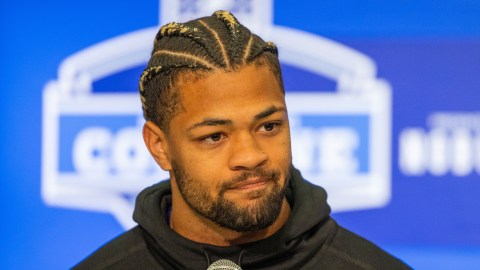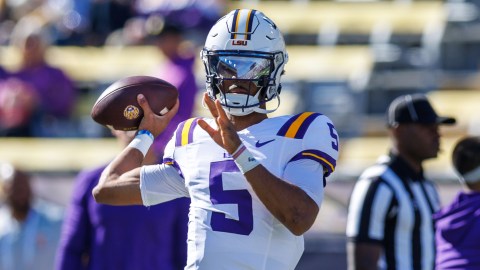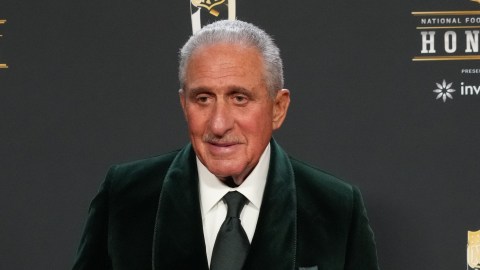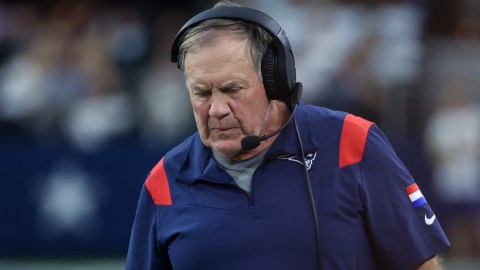 BOSTON — It could be another Mike Webster, a football legend felled while showing symptoms of brain damage. It could be a new Dave Duerson or Junior Seau, a sudden suicide changing the way people see their sports heroes. It could be a fresh round of congressional hearings, when the NFL is forced to look at evidence others have long found convincing.
BOSTON — It could be another Mike Webster, a football legend felled while showing symptoms of brain damage. It could be a new Dave Duerson or Junior Seau, a sudden suicide changing the way people see their sports heroes. It could be a fresh round of congressional hearings, when the NFL is forced to look at evidence others have long found convincing.
Mark Fainaru-Wada and Steve Fainaru, the authors of League of Denial: The NFL, Concussions and the Battle for Truth, can’t guess what the next moving force will be in the concussion crisis in the NFL. But they know it will take some kind of force to again change the habits of a league that learned how to sidestep the dangers of concussions for many years.
“I think there’s no question that on this issue, the league has been a lot more reactive than proactive throughout the years,” Fainaru-Wada told NESN.com ahead of the book’s Tuesday release. “… It’s interesting. The league has definitely made changes, though virtually all of them come under pressure from either Congress or media. I think we’re at the point now where there aren’t a lot of changes they haven’t made, and the question really is, ‘How safe can you really make football?’ Because it’s inherently a violent collision sport.”
The Fainaru brothers also worked with PBS’ Frontline on an accompanying film, which also premieres Tuesday. In League of Denial: The NFL’s Concussion Crisis, they teamed with producer and director Michael Kirk to look into the NFL’s history with head injuries. The project attracted a lot of controversy, especially when ESPN pulled out as an official collaborator just weeks before the film’s release.
The Fainarus, who work for ESPN, say they haven’t been asked to make any changes, and that all the accompanying articles they wrote in the last year have run, including a piece that exposed the NFL’s involvement in steering the brain of Seau to a league-preferred researcher. But they also did all their work without a word from the NFL.
After letting the NFL know about the project early to see if “anyone” would cooperate, they received “significant pushback” throughout the process, Fainaru-Wada said.
Kirk, who has spent his career investigating cover-ups and other touchy topics for Frontline, said the film got nothing from the NFL compared to other groups he has investigated.
“I wish they would talk to us,” he said at a recent WGBH event touting the film, which like all Frontline films was produced locally by WGBH. “I have a lot of questions for them, and they’re important questions.”
The documentary was able to fill in most of the pieces itself, tracking the league’s response to concussions from around 1994, when it started its first head injury committee after outside pressure, to now, when the NFL is changing rules and preaching player safety just a few years after mocking those who said football could cause brain damage.
“I think what was most striking to us was the level of denial that had gone on by the NFL over two decades,” Fainaru said.
In the days before the release of the film and the book, NFL commissioner Roger Goodell sent a letter to fans saying the NFL was committed to player safety.
“Even to this day, while the commissioner is sending out his email to fans talking about the safety of the sport, there’s really nobody with the league publicly affirming that there’s a connection between football and long-term brain damage,” Fainaru-Wada said.
The film follows the league’s “mixed message” in helping players who are dealing with the effects of concussions while not admitting where those effects come from. The narrative starts with the discovery of chronic traumatic encephalopathy, or CTE, in the brain of Webster after his death. It details how the NFL has responded to outside research about concussions over the years, including denial or outright obstruction.
While the NFL has since adjusted its rules and approach to player safety, everything the league says — and the way research from scientists and members of the medical community is received — now takes on a different hue.
“It will be very hard for people to take the NFL seriously at this point when it comes to the science of concussion because of the history that we document,” Fainaru said.
While the NFL’s credibility will likely take a hit as further research comes out, though, the league is still largely in a position of power in the concussion debate due to its immense financial advantages. It’s that paradox that plays out in parts of the film and that makes it hard to know where the concussion crisis will go moving forward, the Fainarus said.
“One thing that became clear … is how incredibly huge the NFL is, and what an enormous place it has in the culture,” Fainaru said. “… The NFL is still very much in control of this issue from a dollars standpoint. They’ve poured enormous resources into institutions that will be investigating this.”
It doesn’t take advanced accounting to measure the financial force of the NFL. About 100 million people watched last year’s Super Bowl, and ESPN has paid $2 billion for the rights to Monday Night Football this year — the equivalent of making a new Harry Potter movie each week, as Fainaru will say. (Even the people jumping into concussion research and safety efforts are getting money from the NFL, raising questions of whether the league is becoming the biggest funder — and possible controller — of the research it once fought.)
“In the short term, the idea that the NFL is going to disappear because of this does seem super unlikely to me, but at the same time, it is a real question that the league obviously has to grapple with, and it has certain implications for its future,” Fainaru said. “I wouldn’t want to discount, but it’s a thriving industry right now. And even with all the information that’s been out there for the last several years … it’s obviously still enormously popular.”
If the sport is affected, the Fainarus said, it will likely be at a lower level — where parents ask whether they want their children to be subject to the brain damage football can cause.
“That question is something that’s going to be playing out over a period of years, if not decades,” Fainaru said.
The film and book are clear about the league’s stance with concussions and player care. Where conclusions are harder to find, though, is in what the research is showing. Football is leading to brain damage, but beyond that — what types of brain damage, who is affected, what types of hits cause the damage and whether changing the game can stop it — little is known. Concussion experts can say that it’s an incredibly serious issue and that heads must be protected, but they have a long way to go for specifics, and that’s how the NFL can still hope the research takes a sunny turn.
The complications surrounding concussion research are what have caused much controversy, especially as the NFL has fought to protect its sport.
Its response over the last 20 years has turned into what looks like a bad call. But that doesn’t mean the next call — on concussions, CTE or the NFL’s approach to either — is a given, either.
“My question is, given where they’ve come from — as recently as three or four years ago, they were denying this was even a problem — how seriously can we take them?” Fainaru said. “Are they really interested in getting to the bottom of this? There’s so many still unresolved questions — or are they still trying to protect their bottom line?”
The Frontline film premieres Tuesday at 9 p.m. on PBS.
Photo via Twitter/@RoyalPhoto_



